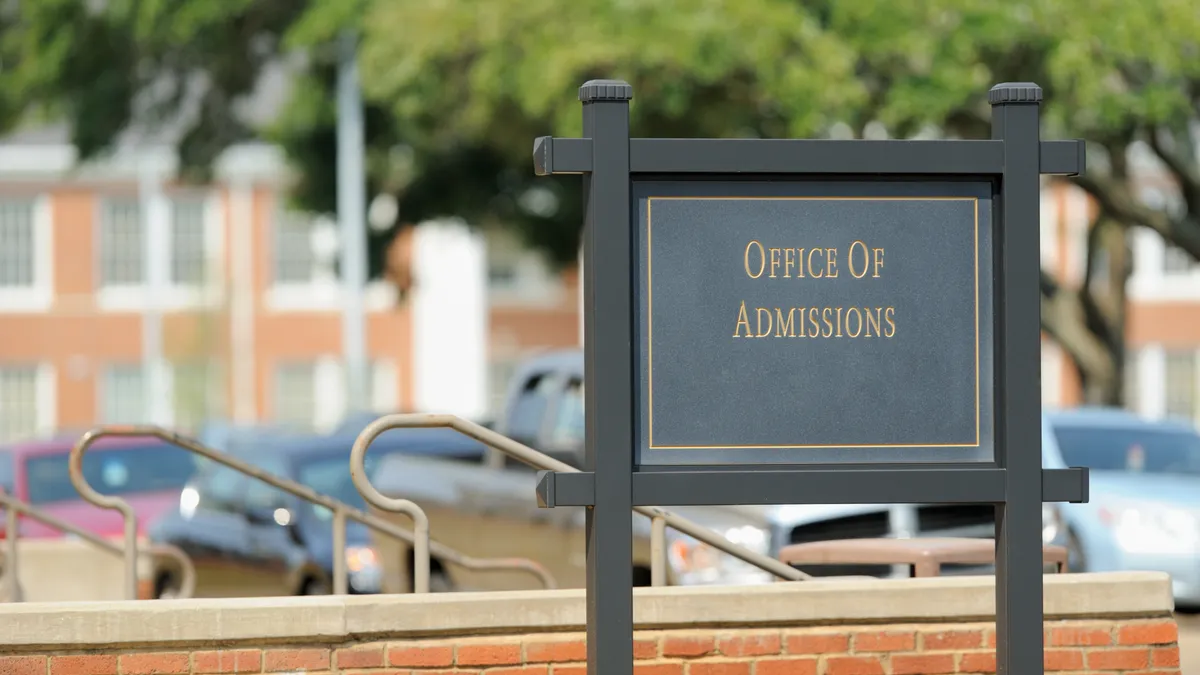This article is the first in a year-long series on the experiences of a new principal in the Prince George’s County Public Schools. Read additional installments here.
Sometimes the road to the principalship twists, turns and swerves along a Mardi Gras-themed track with unexpected zigzags and plunges before reaching the end of the course.
But the Ragin' Cajun ride at Six Flags America in Bowie, Maryland, was just one coaster that more than 200 Prince George’s County Public Schools (PGCPS) assistant principals sampled recently during a two-day training involving those brave enough for the thrill ride of being a school leader.
“We know this is something administrators appreciate and need at this time of year,” Associate Superintendent Doug Anthony, who also leads the district’s Office of Talent Development, said in an interview.
Thank you @pgcps Dr. Goldson and @SixFlagsDC for providing the space and opportunity 2 create a unique learning experience for our outstanding assistant principals. A great 2 days with great people! @APIPpgcps @ALPSSpgcps @WallaceFdn @OTDpgcps @hrpgcps #PGCPSPROUD pic.twitter.com/u2WwglV2W8
— Dr. Doug Anthony (@DrDougAnthony) May 15, 2019
Questions school leaders ask themselves
But the administrator field trip, which included professional development on progressive discipline and compliance-related issues before the educators scattered for the Wild One, the Voodoo Drop and a few other rides, was much more than a chance to celebrate the end of the school year.
It was a culminating piece of the 132,000-student district’s suite of leadership development programs, which includes the Assistant Principal Induction Program (APIP) I and II, the Aspiring Leaders Program for Student Success (ALPSS) for principal “bench candidates,” and the Resident Principal Preparation Program for “high-flyers” who need more clinical experience before officially becoming a principal, Anthony said.
“I think as an aspiring leader, we all go through the questioning or the reflection of 'Am I good enough? Do I possess the skills necessary to be successful? How can I make an impact in the school?' Those are the questions I've asked myself,” David Brown, an assistant principal at Capitol Heights Elementary, said during his day at Six Flags.
Now completing ALPSS, Brown said the program has helped “demystify” the position by familiarizing future principals with the structures and partnerships available to support schools. That includes the one with Six Flags, the county's largest employer of PGCPS students. “I think it's a great opportunity because the principal's seat is a huge seat,” Brown said.
But eight years ago, PGCPS didn’t have such programs in place. That’s when the majority black and Hispanic district next to Washington, D.C. became one of six large urban school districts participating in the Wallace Foundation’s Principal Pipeline Initiative (PPI). A major, $75 million effort, PPI supported districts’ efforts to move forward on a “cohesive” leadership preparation package that included having standards for school leaders, designing such preparation activities, being more selective about hiring and placing administrators, and providing on-the-job support and evaluation.
A RAND Corp. study released in April showed that schools led by administrators placed as part of the initiative have higher student achievement in both reading and math compared to a control group of similar schools. Retention rates were also higher among PPI principals compared to other newly placed school leaders.
Professional learning programs specifically for assistant principals are important because, for many educators in that role, “it had been years since they had been in [preparation] programs,” Jody Spiro, the director of education leadership at the Wallace Foundation, said in an interview. Most aspiring principals in PGCPS now participate in at least one of the programs, each of which lasts about a year. Since they were developed, 275 educators have been through APIP, 81 through ALPSS and 15 have completed the residency program.
Thomas Rivers, an assistant principal at Rogers Heights Elementary School in Bladensburg, Maryland, said the programs have been helpful in understanding the district’s priorities and connecting with colleagues who are at the same point in their careers.
“We're a really, really large district, so it gives us a chance to dissect and understand the initiatives and really grow out own leadership and development,” he said. "Another thing is just being able to have a chance to process and network, because once you go out into your buildings, you’re kind of by yourself. You have leadership within your buildings, but you're alone.”
Creating a ‘clear process’ for partnership
But programs weren’t the only “glaring” piece missing when PGCPS became part of the initiative in 2011. “We didn’t have leader standards at all," Anthony said. "We didn’t have a through line or very systemic way to look at leaders.”
With the support of PPI, the district not only developed PGCPS Leadership Standards, but also helped to inform the Professional Standards for Educational Leaders, crafted by the National Policy Board for Educational Administration and the Council of Chief State School Officers.
And while the district had some “disparate,” “one-off” programs at the university level, strong, reciprocal partnerships with universities were also absent from the district’s efforts to prepare future principals. With roughly $12.5 million over a five-year period from the Wallace grant, “we figured everyone would be knocking down the door,” Anthony said.
But in fact, “universities were not willing to partner with” the district, Spiro said, and didn't respond to a request for proposals. It took some “market research” to understand why. The district spent some of its Wallace grant to bring together university representatives, and Anthony bluntly asked: “Why don’t you want to work with us?”
He heard three primary responses. First, professors who wanted to conduct research in the district often hit roadblocks because of the district’s “hard line” toward having access to classrooms. Second, there was no clear point of contact, which is likely why the partnerships they did have were scattered and short-lived.
“That becomes intimidating for universities,” Annette Campbell Anderson, who directs administration and supervision programs at Johns Hopkins University’s School of Education, said in an interview. “They don’t have time to set up relationships with multiple players in the district.”
But now the partnerships are housed in Anthony’s department, and there is a “clear process” for research studies. Anderson has a doctoral student who is conducting research on social-emotional learning in the district’s high schools — access that before would not have been possible, she said. Supporting novice teachers of English learners (ELs) and integrating computational thinking into elementary teacher preparation programs are among the several projects University of Maryland (UMD) researchers are conducting in the district. (UMD's flagship campus is College Park in PG County.)
"It was painful to hear from our university partners that they found it difficult to work with our school district," Anthony and Pamela Shetley, the director of talent development, wrote in a National Association of Secondary School Principals article last fall. "We used this candor as a launching pad to invite our partners to continue an open and transparent dialogue."
Finally, university leaders and faculty members had been influenced by a “negative narrative” about the district in the news — topics that may have ranged from turnover in the superintendent's office to low performance of some of the district's schools. “They didn’t think we knew what we were doing,” Anthony said.
“That becomes intimidating for universities. They don’t have time to set up relationships with multiple players in the district.”

Annette Campbell Anderson
Assistant Professor, Johns Hopkins University School of Education
Supporting 'professional bonds'
Now, university partners and district leaders meet twice a year, and specific partnerships have formed that are preparing future leaders to lead schools with the population of students in the district.
An administrator certificate program at McDaniel College in Westminster, Maryland, for example, emphasizes ELs — and a Johns Hopkins certificate program focuses on leading urban schools. A UMD administrator certificate program focuses on STEM leadership, and that institution also offers a doctoral program for school system leaders in partnership with the district.
Meanwhile, post-doctoral fellows from the district also work together on a problem of practice — currently improving math performance among the middle school students, Margaret McLaughlin, a professor who leads UMD's doctoral program in school leadership, explained in an email.
While the partnership with the district coincides with PPI, McLaughlin said it also reflects changes that have taken place at UMD "The university's presence in the county and with the county is greater and more visible," she said. "From the college perspective, there has been greater receptivity on the part of the school system, and I think a much greater awareness among our faculty of the need to focus on partnerships."
The partnerships have also helped to sustain the pipeline work even though the district has experienced significant turnover in leadership — four superintendents since the beginning of the initiative. “The superintendent whom we were confident could lead this work left less than a year after it began,” Spiro noted.
That’s why creating an approach to leadership development instead of it being a “person-driven thing” was important, Anthony said. “Once you build the infrastructure, you are able to do more.”
Melissa Ellis, who directs the district’s leadership work, added in an interview that continuing to examine each component “informs you if your programs are high-performing or need some work.” The district uses a rubric called Quality Measures to identify areas for improvement in the programs, such as making sure the content is in line with the PGCPS Leadership Standards and including the APIP requirements in job postings for assistant principal positions.
As the district prepares to place as many as 25 new principals over the summer, aspiring leaders say they’ve benefited from interacting with those already leading schools as well as others who are pursuing the position.
“Hopefully we all assume a principal position in the near future,” said Brown. “What professional bonds have you created that will help you along the way? I look at things one way, others look at things differently. How can we merge all of those thoughts, opinions and guiding practices to come up with the best strategy to moving kids forward?”
Roger Riddell contributed to the reporting in this story.








 Dive Awards
Dive Awards












